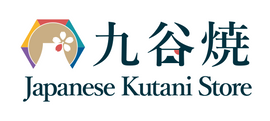Kutani ware is an ancient artifact, which originated in Japan in the 16th century. However, during the same time, pottery was at its highest production in China as well. Both countries started making several forms of earthenware in the Neolithic Period.
The Tang dynasty of China was quite significant for porcelain and inventions that reached far and wide across the world. During this period, two materials were discovered in China, which was the starting point of porcelain production. One was a white China clay known as Kaolin and the other was pulverized feldspathic rock called Petuntse – the China stone.
Combining the two materials and fired in kilns at over 1250º C, the materials melt and fuse together. The porcelain ends up with a shiny, glassy surface through vitrification. The common characteristics of porcelain are that it is white, resistant to thermal shock, impermeable and translucent.
Chinese Porcelain
Once China started production, it became the best in porcelain products around the world. Trading porcelain products all over the globe especially, Asia, Korea and Japan to strengthen the economy. The tin-glazed earthenware we see today in Islamic history was inspired by Chinese and Japanese porcelain. Additionally, many other cultural designs that we see today around Europe and the Middle East have been inspired by China.
Blue & White Chinese Porcelain
The main production center was established in the early 13th century in Jingdezhen city, located in Southern China. The potters were able to develop a unique pattern by using cobalt blue decoration for under glazing. This new blue and white Chinese porcelain soon caught the attention of the international market. In the early 13th century up until the 17th, this pottery was everywhere in the European, Middle Eastern, South East Asian, and American markets.
The famous blue and white Chinese porcelain is known as the first global commodity. It also inspired several ceramic traditions around the world, which went on to become a cultural identity for many countries. One of the best things about the blue & white pottery is that it is rich in objects and tells stories about the late Ming and Qing dynasties.
Products were manufactured for scholars, imperial households, gentry classes, and the export market. Every piece was unique focusing on different aspects of Chinese culture and beliefs. The patterns of Kutani China range from mythical beings, Buddhist and Daoist iconography, motifs, symbols and scenes from literary sources. Anything that represents China and the Chinese culture was imprinted on these white and blue potteries.
The Shift to Influential Japanese Porcelain
In the mid-17th century, the trade of Chinese porcelain was disrupted, which was soon followed by the fall of the Ming Dynasty. As a result, the Dutch East India Company went to Japan who at the time had a foreign monopoly on trading porcelain. Soon after the needed boost, Japanese potters became exceptionally well at making pottery using naturally mixed deposits of porcelain clay.
The use of more vibrant enamel colors used by the Japanese gave birth to Kutani ware including vases, trays, cups, and other dinnerware. These different decoration styles were given unique names and soon they became popular around the world. Japanese Kutani was soon made available everywhere characterized by its bold colors and storytelling.
Japanese porcelains have Chinese roots, that is why Kutani ware is called kutani china. But Kutani ware that we know was established in Japan. It was in 18th century Japan, that the art was revived and flourished and continues until date. Some people often confuse Kutani to be from China even though all Kutani ware is Japanese.
We believe the interchangeable terms of Kutani Ware and Kutani China is the result of a relationship that has lasted over centuries. However, both are same and what art collectors and Kutani manufacturers alike mean is Kutani ware that are made in Japan.
The difference in Chinese & Japanese Pottery
Although the concept of porcelain pottery is the same, there are a few significant differences between Chinese and Japanese pottery. For one, Japanese Kutani is what lasted even after a lot of challenges and what we see today.
When the trading started back in the 18th century, Japanese Kutani was exported around the world for art collectors. Each piece of Kutani ware displays Japan in terms of its culture, history, and generally what the country is all about.
Some differences to look out for when it comes to Kutani vases are:
- Rims – the Chinese style of rims will have a colorful and decorative border that will be about an inch wide. Japanese styles do not have an elaborated border but a simple red, green or blue circular pattern.
- Textures – take a look at the insides of the vase and see the texture. If it is smooth, it means it is Kutani China because Japanese Kutani will have a texture similar to an orange peel.
- Markings – every Kutani piece will have a marking at the bottom of each piece. This is usually a sign of the artist or the company manufacturer’s stamp. Kutani China will have an even number of characters of the same size. However, Japanese markings are irregular with different fonts, colors, and odd numbers.
- Finishing – Although China had abundant access to enameling materials but soon after Japan started doing it, they did an excellent job. Japan soon came up with several enameling techniques like Ginbari, Totai, and Akasuke. A better, long-lasting finish will mean it is Japanese Kutani.
Original Kutani Ware
The present Kutani ware is manufactured in Japan and enthusiasts are always looking for authentic pieces to collect. What most fail to find is the original Japanese Kutani ware collection. Art collectors often say Kutani China ware instead of Kutani Ware, perhaps because of the shared deep roots between the two countries.
Hailing from Japan, the store has an extensive list of categories that all reflect Japanese culture. They offer express shipping so you can get an original Kutani piece.







